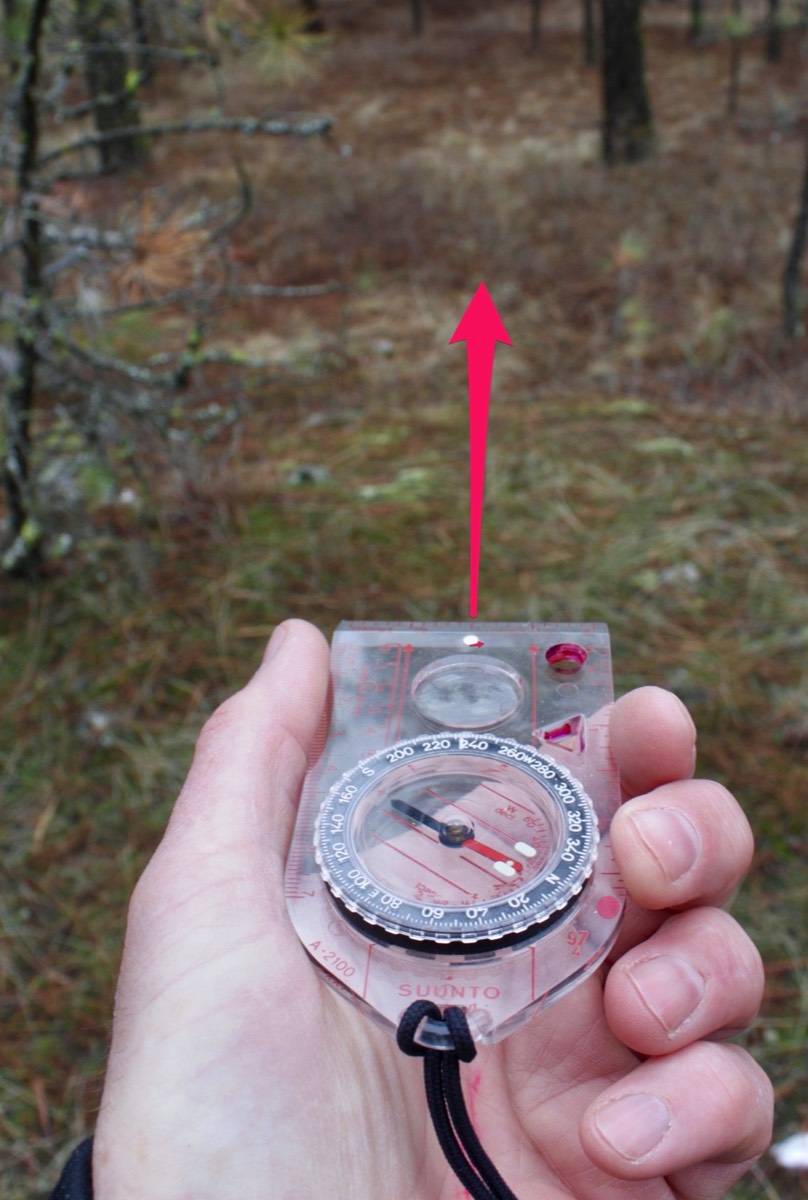Eastern Washington Orienteering Club
Using A Compass With A Map
Turn your body until the magnetic needle lines up with the bezel…

Extend your arm out a little bit and hold the compass level. Now rotate your whole body as you watch the compass. The idea is that the magnetic needle will stay still and you will rotate the compass (along with your body) until north on the compass is lined up with the red end of the compass needle. Compasses vary, but all of them indicate in some prominent way how the magnetic needle should line up with the compass bezel. A common description of this step is "put the red in the shed." When the needle is lined up correctly, your direction of travel is straight ahead.
Pick out an easily recognizable object in the distance. You can lower your compass arm and find a convenient path toward that object. When you get there, raise the compass back up and do it again. Now that you understand how to take a bearing with a compass you can learn a little shortcut.
Bonus Details
- Farther away objects have a couple of advantages. One is, you can travel farther before you have to stop and look at your compass. Another is that you will introduce less error into the process. Taking one measurement is more accurate than adding up a series of shorter measurements. Just be sure to pick an object that's not beyond your next control point.
- Your compass needle reacts to the large magnetic fields in the earth, but it's also susceptible to errors from smaller magnetic objects close by. A magnetic phone case or magnetic buttons on your gloves can make your route-finding very confusing. You can't completely prevent coming across large things in the environment that will affect your compass — like power lines — but you can navigate past those things if you remember not to trust your compass readings when you're close to them.
- It takes practice to turn your whole body as you orient the compass. Resist the urge to twist your hand left or right to help line things up. Remind yourself that you're looking for the direction you're going to walk or run, so you want that compass pointed straight out in front of you.
- This step is yet another opportunity for a "180 error." If you don't pay close enough attention, you can end up aligning your compass needle the wrong way around. Remember: "red in the shed." If you get it turned around, you'll end up heading the opposite direction.
